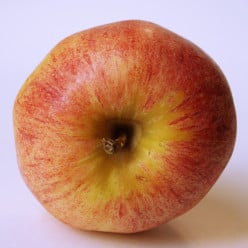Editing hubs
Sometimes, my eyes play tricks on me, and I don't spot a typo or punctuation glitch when I'm writing, necessitating a vist to the 'edit' button.
This is an extremely frustrating process, beause I write poetry, most of which is carefully formatted with non-traditional line breaks.
This is hard enough to do, because of lack of a 'tab' function; (it means I have to sit and count out spacebar hits...sometimes as many as 20...to get the look and feel I want). When editing, it is downright maddening, because all my careful formatting gets lost as all content is slammed back to the left-hand margin.
If the server/processor can 'remember' my formatting long enough to publish the piece, would it not be a relatively simple fix to have it 'remember' where things were when going in to do an edit?
Thank you.I had a similar problem with some of my Hubs that required specific spacing for a different reason. I came up with a solution - not necessarily an easy one, but it did work for me.
That is, first of all I use separate capsules for normal text that does not require special formatting, and then if I need to edit them I will not mess up the formatting of the specially-formatted capsules.
Then (this is more important), in capsules where I want to retain specific formatting, when I first enter or copy and paste the formatted text, I add html tags to indicate that I want to keep the formatting I started with. If I recall (it's been a few weeks since I've done this), the tags are "[pre]" and "[/pre]". The first tag is entered at the beginning of the formatted section and the second one at the end. It may happen that after you click on "html clean-up" you will have to re-format it immediately, but that should only happen the first time.
If you write a lot of poetry, you might do better to add the first tag before you actually key in your poems and then close with the second one.
There should be a link at the top of each text capsule that mentions html tags, and it will help take you through the process. (But the first time may be a little daunting.) I am totally new at this, so if I could do it I'm sure anyone else can too.
I have also had good success with formatting material in Word, then simply copying and pasting. I'm not sure why this has worked sometimes and not other times, but when the formatting is complex (and therefore frustrating to lose) I go with the html tags.Ok--thanks..that is a new html tag for me. (All I really know so far about html is bold, italic, underline, size and color.)
So, if I understand you, the <pre> would go at the very start of the poem, and the </pre> at the end? Not needed for each line break?
Thanks..Yes, as you have stated here. One tag at the beginning of the passage - or even at the beginning of the entire capsule that you have formatted - and one at the end (of passage or capsule or section).
As I mentioned, I am very new at this, but in my own experience it has worked well either way - enclosing a broader or a smaller section with the tags.
Do note, though, that there have been times when immediately after I added the tags, the formatting was actually lost and had to be added again. I guess that was because of what Pcunix mentioned. Also, I am pretty sure that only happened when I first formatted in the text capsule, then went to the html editor to add the tags, then left html editor and returned to the capsule.
For that reason, I believe it would be simplest to type in the tags (in html editor) before you format for the first time, leave the html editor, then finalize any formatting in the usual HP text capsule. If you haven't used html editor yet, be forewarned: the first few times, it looks intimidating; but over the long haul it will be worth learning.
Your question is actually more complicated than you may realize.
What the HP processor is doing is producing HTML. That stands for Hypertext Markup Language, if you click on the HTML tab in the capsule editor, you can see what it actually looks like.
Here's the thing: it's up to the browser to decide how to interpret all that and different browsers can display the same HTML slightly differently and sometimes markedly differently.
There are various ways to suggest spacing to a browser. One is the PRE tag Aficionada mentioned. Another is to use tables and yet another is to use the non-breaking space tag:
The ultimate way to control results is to use CSS. That can be done with style modifiers to ordinary tags. CSS is a bit advanced, but you can learn some handy tricks just by looking at how other people achieved the look you want.
As I said, it is a complicated subject. There are many web resources available to you if you want to learn more about it.Thank you. I do understand that the processor is doing a conversion.. .. (on my blogs, I have the option of viewing html or 'standard' compose screen). When I look at the html screen, it shows me all those 'conversions.'
So my question is this: having already DONE the conversion--it's there--why won't it save it?
I'm still in a (very steep) learning curve on html--not easy for me.. not familiar with that 'non-breaking-space tag. .. does it or does it not go between the < > symbols, as with most other html?
Thanks much!
Related Discussions
- 3
HTML on Text Capsule
by MRS Great Caruso 16 years ago
Does any one know how to use the "HTML" button on the text capsules?...it does not seem to do anything for me at the moment!
- 14
I am making a mess with formatting on my new Hub - help!!
by suziecat7 15 years ago
I am becoming frustrated. I cannot get my photos to align with my text capsules. There was a white gaping space between one text capsule and the relevant link. So I clicked "don't display" on all photos and tried again. Is there any way someone could take a look without me publishing the...
- 68
New Text Editor
by Paul Deeds 17 years ago
We've just begun a beta test period for our new text capsule editor. In order to participate, select Text Editor Version 3 on your profile settings (you can always go back to version 2 if you have problems with version 3).In addition to being based on a bit faster and more stable version of...
- 189
Introducing: HubPro
by Robin Edmondson 10 years ago
Pssst! HubPages is announcing an exciting new service today— check it out in our blog.
- 22
There is a hole in my Hub
by Sinea Pies 14 years ago
Just posted a new hub and there is a big white space that I could not eliminate. It's right in the body of the article. Any suggestions? The Hub is http://hubpages.com/hub/M-M
- 27
With all capsules full width, what about sidebars?
by Ronald E Franklin 7 years ago
The biggest issue I have with all capsules having to be full width is that there now seems to be no provision for sidebar content. I've had to eliminate several sidebar text capsules because although they have supplementary information that would be useful for the reader, they just can't be fitted...








